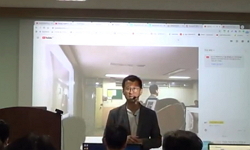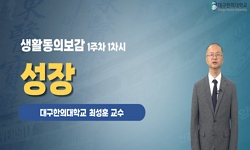In the medieval ideas of political representation, the entities which represent the whole are two. One is the monarch, the other is the representative assembly. It is argued that the monarch or the representative assembly represented the whole body of...
http://chineseinput.net/에서 pinyin(병음)방식으로 중국어를 변환할 수 있습니다.
변환된 중국어를 복사하여 사용하시면 됩니다.
- 中文 을 입력하시려면 zhongwen을 입력하시고 space를누르시면됩니다.
- 北京 을 입력하시려면 beijing을 입력하시고 space를 누르시면 됩니다.

서양 중세의 대의사상: 대표성의 실체에 대한 비판적 검토 = The Medieval Ideas of Political Representation: A Critical Examination of the Entities of the Representative Power
한글로보기https://www.riss.kr/link?id=A104463012
-
저자
이화용 (경희대학교)
- 발행기관
- 학술지명
- 권호사항
-
발행연도
2009
-
작성언어
Korean
-
주제어
modern representation ; medieval representation ; representative assembly ; consent ; monarch ; 근대 대의 ; 중세 대의 ; 대표회의 ; 동의 ; 중세 군주
-
등재정보
KCI등재
-
자료형태
학술저널
-
수록면
125-148(24쪽)
-
KCI 피인용횟수
1
- 제공처
- 소장기관
-
0
상세조회 -
0
다운로드
부가정보
다국어 초록 (Multilingual Abstract)
In the Middle Ages. the monarch, as the head of the whole body politics, was to exercise the rights and discharge the duties of lordship. He was the political agent who exercised the power of the community in practice, but the monarchial power was given by God. Moreover, the roles of the medieval representative assembly in managing affairs of a state are limited and supplementary. As the representative assembly had the crown as the true head, the assembly could not sanction the arbitrary power of the crown.
Like the modern conception of political representation, in the medieval idea of political representation, there were definite conceptions of substitution for the performance of public action. But the representative power in the middle ages was never authorized by a recognition of the supremacy of the people. That is, the people was not entitled to have supreme power over the monarch or the assembly. The medieval conception did not include an understanding of popular sovereignty.
In addition, the examination of the conceptual components of political representation in Middle Ages helps to set out these characteristics of the medieval idea of political representation.
In the medieval ideas of political representation, the entities which represent the whole are two. One is the monarch, the other is the representative assembly. It is argued that the monarch or the representative assembly represented the whole body of the population by acting for the people in the exercise of public power. Contrary many scholars' argument, however, the medieval conception of political representation differs from the modern conception in the interpretation of the issues of who or what is entitled to represent the whole and who authorizes the entitlement.
In the Middle Ages. the monarch, as the head of the whole body politics, was to exercise the rights and discharge the duties of lordship. He was the political agent who exercised the power of the community in practice, but the monarchial power was given by God. Moreover, the roles of the medieval representative assembly in managing affairs of a state are limited and supplementary. As the representative assembly had the crown as the true head, the assembly could not sanction the arbitrary power of the crown.
Like the modern conception of political representation, in the medieval idea of political representation, there were definite conceptions of substitution for the performance of public action. But the representative power in the middle ages was never authorized by a recognition of the supremacy of the people. That is, the people was not entitled to have supreme power over the monarch or the assembly. The medieval conception did not include an understanding of popular sovereignty.
In addition, the examination of the conceptual components of political representation in Middle Ages helps to set out these characteristics of the medieval idea of political representation.
다국어 초록 (Multilingual Abstract)
In the Middle Ages. the monarch, as the head of the whole body politics, was to exercise the rights and discharge the duties of lordship. He was the political agent who exercised the power of the community in practice, but the monarchial power was given by God. Moreover, the roles of the medieval representative assembly in managing affairs of a state are limited and supplementary. As the representative assembly had the crown as the true head, the assembly could not sanction the arbitrary power of the crown.
Like the modern conception of political representation, in the medieval idea of political representation, there were definite conceptions of substitution for the performance of public action. But the representative power in the middle ages was never authorized by a recognition of the supremacy of the people. That is, the people was not entitled to have supreme power over the monarch or the assembly. The medieval conception did not include an understanding of popular sovereignty.
In addition, the examination of the conceptual components of political representation in Middle Ages helps to set out these characteristics of the medieval idea of political representation.
In the medieval ideas of political representation, the entities which represent the whole are two. One is the monarch, the other is the representative assembly. It is argued that the monarch or the representative assembly represented the whole body of...
In the medieval ideas of political representation, the entities which represent the whole are two. One is the monarch, the other is the representative assembly. It is argued that the monarch or the representative assembly represented the whole body of the population by acting for the people in the exercise of public power. Contrary many scholars' argument, however, the medieval conception of political representation differs from the modern conception in the interpretation of the issues of who or what is entitled to represent the whole and who authorizes the entitlement.
In the Middle Ages. the monarch, as the head of the whole body politics, was to exercise the rights and discharge the duties of lordship. He was the political agent who exercised the power of the community in practice, but the monarchial power was given by God. Moreover, the roles of the medieval representative assembly in managing affairs of a state are limited and supplementary. As the representative assembly had the crown as the true head, the assembly could not sanction the arbitrary power of the crown.
Like the modern conception of political representation, in the medieval idea of political representation, there were definite conceptions of substitution for the performance of public action. But the representative power in the middle ages was never authorized by a recognition of the supremacy of the people. That is, the people was not entitled to have supreme power over the monarch or the assembly. The medieval conception did not include an understanding of popular sovereignty.
In addition, the examination of the conceptual components of political representation in Middle Ages helps to set out these characteristics of the medieval idea of political representation.
참고문헌 (Reference)
1 박동천, "영국대의정치의 진화과정" 35 : 13-, 2004
2 이화용, "마르실리우스의 정치대표론: 시민권, 권력전이, 그리고 정치의 회복" 35 (35): 9-10, 2001
3 R. H. Lord, "The Parliaments of the Middle Ages and the Early Modern Period" 14 : 125-126, 1930
4 E.H.Kantorowicz, "The King’s Two Bodies: A Study in Medieval Political Theory" Princeton University Press 336-383, 1957
5 S. E. Finer, "The History of Government from the Earliest Times, Vol. II" Oxford University Press 1037-1038, 1997
6 A. F. Pollard, "The Evolution of Parliament" Longman, Green & Co. 109-159,
7 "The Compact Edition of the Oxford English Dictionary. Vol. II" Oxford University Press 2498-, 1971
8 Augustine, "The City of God against the Pagans. XIX" Cambridge University Press 15-,
9 Robert L. Benson, "The Bishop-Elect, A Study in Medieval Ecclesiastical Office" Princeton University Press 27-, 1968
10 T. Aquinas, "Summa Theologiae, in: Opera Omnia Iussu Impensaque Leonis XIII Edita, Vol. V, VII and VIII" 1882
1 박동천, "영국대의정치의 진화과정" 35 : 13-, 2004
2 이화용, "마르실리우스의 정치대표론: 시민권, 권력전이, 그리고 정치의 회복" 35 (35): 9-10, 2001
3 R. H. Lord, "The Parliaments of the Middle Ages and the Early Modern Period" 14 : 125-126, 1930
4 E.H.Kantorowicz, "The King’s Two Bodies: A Study in Medieval Political Theory" Princeton University Press 336-383, 1957
5 S. E. Finer, "The History of Government from the Earliest Times, Vol. II" Oxford University Press 1037-1038, 1997
6 A. F. Pollard, "The Evolution of Parliament" Longman, Green & Co. 109-159,
7 "The Compact Edition of the Oxford English Dictionary. Vol. II" Oxford University Press 2498-, 1971
8 Augustine, "The City of God against the Pagans. XIX" Cambridge University Press 15-,
9 Robert L. Benson, "The Bishop-Elect, A Study in Medieval Ecclesiastical Office" Princeton University Press 27-, 1968
10 T. Aquinas, "Summa Theologiae, in: Opera Omnia Iussu Impensaque Leonis XIII Edita, Vol. V, VII and VIII" 1882
11 Gaines Post, "Studies in Medieval Legal Thought: Public Law and the State 1100-1322" Princeton University Press 434-493, 1964
12 Paul O. Kristeller, "Renaissance Thought and Its Sources" Columbia University Press 128-, 1979
13 Brian Tierney, "Religion, Law and the Growth of Constitutional Thought" Cambridge University Press 40-42, 2008
14 Cam, Marongiu, "Recent Works and Present Views on the Origins and Development of Representative Assemblies" 22 : 60-7,
15 O. Gierke, "Political Theories of the Middle Ages" Cambridge University Press 62-, 1987
16 이화용, "Political Representation in the Later Middle Ages: Marsilius in Context" University of Cambridge 2000
17 Harvey C. Mansfield, Jr, "Modern and Medieval Representation, in: Nomos X: Representation" Atherton 55-82, 1968
18 M. V. Clarke, "Medieval Representation and Consent" Longmans, Green & Co. 5-, 1936
19 Antonio Marongiu, "Medieval Parliaments, A Comparative Study" Eyre & Spottiswoode 19-33, 1968
20 C. H. McIlwain, "Medieval Estates, in: Cambridge Medieval History, VII" 679-,
21 Helen M. Cam, "Liberties and Communities" Cambridge University Press 15-, 1944
22 F. Kern, "Kingship and Law in the Middle Ages" Basil Blackwell 1939
23 Patrick Riley, "How Coherent is the Social Contract Tradition?" 34 : 543-562, 1975
24 S. Chrimes, "English Constitutional Ideas in the Fifteenth Century" Cambridge University Press 131-133, 1936
25 A. Friedberg, "Decretum Gratiani, II" 1881
26 Aquinas, "De Regimine Principum Ad Regem Cypri, in: Thomae Aquinatis Opuscula Omnia Necnon Opera Minora. Vol. I" P. Lethielleux 1-14, 1949
27 Arthur P. Monahan, "Consent, Coercion, and Limit: The Medieval Origins of Parliamentary Democracy" McGill-Queen's University Press 9-, 1987
28 S. Chodorow, "Christian Political Theory and Church Politics in the Mid-Twelfth Century: The Ecclesiology of Gratian’s Decretium" University of California Press 200-203, 1972
29 H. Pitkin, "Appendix on Etymology, in: The Concept of Representation" University of California Press 241-252, 1967
30 Carlyle, "A History of Medieval Political Theory, Vol. V" 465-,
31 Robert W, "A History of Medieval Political Theory in the West. Vol. V" William Blackwood & Sons Ltd 464-474, 1903
동일학술지(권/호) 다른 논문
-
- 한국서양중세사학회
- 박용진
- 2009
- KCI등재
-
Pilgrimage to Santiago de Compostela and the Supporting Travel Network
- 한국서양중세사학회
- Tetsuyuki Seki
- 2009
- KCI등재
-
필립 아리에스의 죽음관에 대한 연구: 죽음에 대한 중세인의 태도를 중심으로
- 한국서양중세사학회
- 차용구
- 2009
- KCI등재
-
10-12세기 프랑스 교회 영주령에 속한 농노에 관한 연구:『소뮈르의 생플로랑 수도원의 검은색 표지의 문서집』을 중심으로
- 한국서양중세사학회
- 이정민
- 2009
- KCI등재
분석정보
인용정보 인용지수 설명보기
학술지 이력
| 연월일 | 이력구분 | 이력상세 | 등재구분 |
|---|---|---|---|
| 2026 | 평가예정 | 재인증평가 신청대상 (재인증) | |
| 2020-01-01 | 평가 | 등재학술지 유지 (재인증) |  |
| 2017-01-01 | 평가 | 등재학술지 유지 (계속평가) |  |
| 2013-01-01 | 평가 | 등재학술지 유지 (등재유지) |  |
| 2010-01-01 | 평가 | 등재학술지 유지 (등재유지) |  |
| 2007-01-01 | 평가 | 등재학술지 선정 (등재후보2차) |  |
| 2006-01-01 | 평가 | 등재후보 1차 PASS (등재후보1차) |  |
| 2004-01-01 | 평가 | 등재후보학술지 선정 (신규평가) |  |
학술지 인용정보
| 기준연도 | WOS-KCI 통합IF(2년) | KCIF(2년) | KCIF(3년) |
|---|---|---|---|
| 2016 | 0.21 | 0.21 | 0.23 |
| KCIF(4년) | KCIF(5년) | 중심성지수(3년) | 즉시성지수 |
| 0.25 | 0.21 | 0.807 | 0.08 |




 eArticle
eArticle







